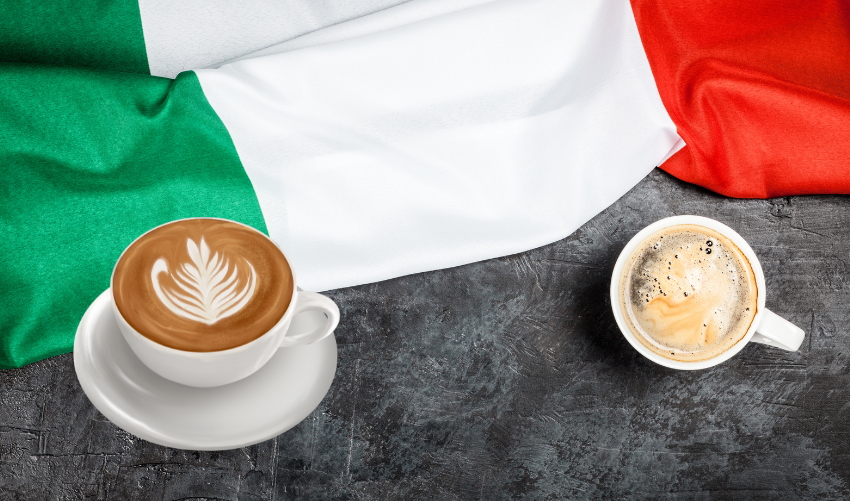Coffee isn’t just a beverage—it’s a story woven through centuries, continents, and cultures. From its humble beginnings in Ethiopia to bustling cafés in modern cities, coffee has shaped how people gather, communicate, and create.
This guide explores the rich history and evolving culture of coffee. You’ll discover how traditions began, how brewing styles developed across regions, and how coffee continues to influence daily life around the world.
The Ancient Origins Of Coffee
Coffee has a rich culture and history that spans centuries. Its journey began in the ancient lands of Africa. The ancient origins of coffee are fascinating. They reveal how a simple bean transformed into a global phenomenon.
The Discovery In Ethiopia
Coffee is believed to have originated in the Kaffa region of Ethiopia. The legend of the goatherd Kaldi describes his discovery of coffee’s stimulating effects. Kaldi noticed that his goats became energetic after eating the red berries from a certain shrub. Curious about these berries, he tried them himself and experienced similar energy.
After his discovery, Kaldi shared the berries with a local monastery. The monks brewed a drink from the berries. They found it helped them stay awake during long hours of prayer.
Coffee’s Early Spread & Use
By the 6th century, coffee beans were transported across the Red Sea to Yemen. This marked coffee’s early spread beyond Ethiopia. In Yemen, coffee gained popularity among Sufi mystics. They used coffee to stay awake during nightly prayers.
As coffee continued to spread, its use evolved. Early consumption was often as a beverage or even a food, ground with fat. Coffeehouses began to emerge in the Middle East.
- Yemen played a crucial role in coffee’s journey.
- Coffeehouses fostered community and conversation.
- People gathered to enjoy coffee and share ideas.
This early spread of coffee laid the foundation for the beverage’s global popularity. Today, coffee is enjoyed in countless forms around the world.

The Global Spread Of Coffee
Today, coffee connects people across the world, serving as a bridge between diverse cultures. This journey began in the Middle East and expanded to Europe, the Americas, and beyond.
From The Middle East To Europe
Coffee houses emerged in major Middle Eastern cities, like Mecca and Cairo, by the 15th century. These establishments became vibrant centers for social interaction and intellectual discussion.
- People gathered to enjoy coffee and share ideas.
- Music and poetry flourished in these spaces.
- They played a key role in cultural exchanges.
Italian traders introduced coffee to Europe in the early 17th century, initially facing skepticism. Many Europeans were unsure about this dark drink. However, by the mid-17th century, coffee houses became popular social and intellectual hubs across Europe.
Coffee’s Journey To The Americas
Coffee was first introduced to the Caribbean islands, such as Martinique, in the early 18th century. The warm climate proved ideal for coffee cultivation. Soon, cultivation rapidly expanded into Central and South America, notably Brazil and Colombia.
- Brazil became the largest coffee producer by the 19th century.
- Colombia developed a strong coffee culture.
- The Americas became the largest coffee-producing region.
Coffee’s success in the Americas led to significant economic growth. Plantations flourished, and coffee became a major export. The drink’s popularity skyrocketed in North America as well, solidifying coffee’s place in everyday life.
Asian & African Expansion
Coffee cultivation reached India and Southeast Asia, particularly Indonesia, by the late 17th century. Colonial powers spread coffee cultivation to new territories for economic gain.
- Various African countries beyond Ethiopia developed distinct coffee traditions.
- In Yemen, coffee became an integral part of social life.
- Vietnam later emerged as a significant coffee producer.
Throughout Asia and Africa, coffee adapted to local tastes and customs. Each region developed unique brewing methods and rituals. Today, these diverse traditions enrich the global coffee culture.

Explore Iconic Coffee Drinks & Their Legacies
Many popular coffee drinks have roots in specific historical periods or cultural traditions. From simple additions to complex concoctions, each drink tells a story that reflects the society that created it.
Drinks Shaped By History & Culture
Coffee drinks have evolved significantly across time and place. Each drink often reflects the culture and resources available during its creation. Here are some notable examples:
- Americano Coffee: Learn the history and how to make this popular espresso and water blend. It originated during World War II when American soldiers added water to espresso for a milder taste.
- Latte: Explore the origins and techniques behind this creamy, milk-based favorite. The latte became popular in Italy, with roots in the 17th century.
- Cappuccino: Discover the story and art of Italy’s iconic espresso, milk, and foam drink. Its name comes from the Capuchin friars, whose robes resembled the drink’s color.
- Chicory Coffee: Uncover the unique history and preparation of this distinctive blend. Chicory coffee became popular during the Civil War when coffee was scarce.
Each drink serves a purpose beyond taste. They connect us to the past. They remind us of the cultures and people who made them.
Dive Deeper Into Your Favorite Drinks
Understanding iconic coffee drinks enriches the experience of enjoying them. Each drink has its own story and preparation method. Here are some details to help you appreciate them more:
- Americano: To make an Americano, brew a shot of espresso and add hot water. The ratio can vary based on personal preference.
- Latte: A classic latte requires one shot of espresso and steamed milk, topped with a small amount of foam. Consider adding flavored syrups for extra sweetness.
- Cappuccino: A cappuccino consists of equal parts espresso, steamed milk, and foam. The layers create a beautiful presentation.
- Chicory Coffee: Mix ground coffee with roasted chicory root for a unique taste. This blend is especially popular in New Orleans.
Each drink offers a chance to savor history in a cup. Whether you prefer a creamy latte or a strong Americano, there is a rich tradition behind every sip.
Diverse Global Coffee Cultures
From the bustling cafés of Italy to the tranquil kissaten of Japan, coffee brings people together. Diverse global coffee cultures showcase unique flavors and practices that reflect local customs.
Unique Brewing Traditions
Each region has its own way of brewing coffee. These unique traditions shape the coffee experience. Here are some notable brewing methods:
- Italian Espresso Rituals: This method focuses on fast, stand-up consumption of intense, concentrated coffee.
- Turkish Coffee Ceremony: It uses finely ground coffee boiled in a cezve. This coffee is served unfiltered and often used for fortune-telling.
- Scandinavian Coffee Habits: This culture is characterized by high consumption of light roasts. The social “fika,” or coffee break, is a cherished tradition.
- Japanese Coffee Culture: It emphasizes precision and craftsmanship. Coffee is brewed with care in places like kissaten and specialty cafés.
- Latin American Coffee Customs: In many regions, strong, sweet coffee is shared in social or family settings. Popular examples include cafecito and tinto.
- American Coffee Evolution: Coffee has evolved from frontier brewing to diner coffee. Today, drive-thrus and specialty coffee shops are popular.
These brewing traditions show the importance of coffee in daily life. They create a sense of belonging and connection among people.
Regional Coffee Experiences
Coffee experiences differ across regions. Each area adds its own flavor to the coffee culture. Here are some regional highlights:
| Region | Experience |
|---|---|
| Italy | Quick espresso shots in bustling cafés. |
| Turkey | Rich, unfiltered coffee served during ceremonies. |
| Scandinavia | Light roasts enjoyed during social breaks. |
| Japan | Artisanal brewing in peaceful settings. |
| Latin America | Sweet coffee shared among family and friends. |
| United States | Variety of coffee styles, from drive-thrus to specialty shops. |
These experiences show how coffee can unite people. Each sip tells a story of culture and community. As coffee lovers explore these diverse global cultures, they discover the rich history behind each cup.
Key Milestones & Modern Trends In Coffee
Key milestones have shaped how we enjoy coffee today. Modern trends reflect our changing tastes and values. Understanding these milestones helps us appreciate our daily cup.
Innovation & Industry Shifts
The coffee industry has seen significant changes over the years. Innovations have transformed how we grow, process, and enjoy coffee. Here are some key innovations:
- The invention of the espresso machine: Early 20th century.
- Instant coffee: Widespread adoption in the mid-20th century.
- Farming technology: Advancements improve coffee quality.
- Brewing technology: New tools enhance the coffee experience.
These innovations have led to major industry shifts:
| Wave | Focus | Characteristics |
|---|---|---|
| First Wave | Mass production and convenience | Pre-ground and vacuum-packed coffee |
| Second Wave | Café experience | Branding and flavored drinks (e.g. Starbucks) |
| Third Wave | Quality and transparency | Single origins and skilled brewing |
These shifts show how coffee has evolved. Each wave reflects changing consumer preferences and industry standards. Today, coffee lovers seek more than just caffeine. They want quality and an experience.
The Waves Of Coffee
The journey of coffee can be divided into distinct waves. Each wave has its unique characteristics and influences. Understanding these waves helps us see coffee’s evolution.
- First Wave: Focused on mass production. Coffee became a household staple. Convenience was key.
- Second Wave: The rise of coffee shops. Brands like Starbucks changed how people viewed coffee. This wave emphasized the café experience.
- Third Wave: A shift towards quality. Consumers now value transparency in sourcing and brewing. Specialty coffees and skilled baristas take center stage.
Each wave represents a change in how society views coffee. Coffee is no longer just a drink. It is an experience that connects people. This cultural shift has led to a deeper appreciation of coffee.

